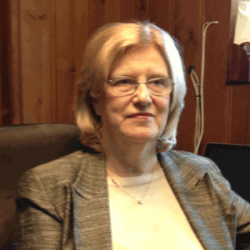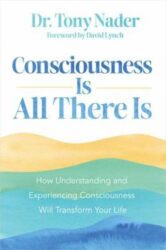Living Sustainably from the Inside Out

What does it mean to live sustainably? Is it recycling diligently? Driving an electric car? Growing your own organic veggies?
According to the dictionary, sustainable means “able to be maintained at a certain rate or level.” Or “conserving an ecological balance by avoiding depletion of natural resources.” Other people might define it as the energy going out never exceeding the energy going in.
When I think of the words “sustainable living” I think of my parents, who, like many people born in the Depression years, lived a pretty sustainable lifestyle. My mom, who calls herself the original recycler, saved tinfoil in a giant ball, washed out plastic bags and hung them to dry, and even packed our lunches in used Pepperidge Farm bread bags.
My dad caught a ride to work so they would only need one car. My dad was an engineer who did not believe in designing machines with planned absolescence, and he fixed his own tools and machines rather than buying new ones. He also designed and built our passive solar home in 1959, which had six-inch walls and was energy-efficient in an era when fuel prices were so cheap that many homes in our northern-Illinois neighborhood were built without any insulation at all.
On one level they had it down—they fixed, reused and recycled almost everything in their environment, so that the energy going out pretty much equaled the energy going in. Without knowing it they were early pioneers in the sustainable movement of today, which aims to rely on sustainable resources such as the sun and wind so we don’t have deplete our remaining reserves of unsustainable fossil fuels.
I was proud of my parents, and I took their example to heart, reducing my own energy consumption by becoming a vegetarian, and in later life ended up writing many articles about the sustainability movement.
But even while growing up I started to wonder if this principle of sustainability could be taken a step further—could it be applied to our human bodies. Was there a sustainable source of energy within? Most people I knew felt so tired at the end of the day that they couldn’t even enjoy the evening. Even though I was a young person, I felt pretty tired myself. I studied, worked as a waitress and took a bus to high school at 7 a.m. and returned at 5 p.m.
I started to wonder, could there be a way we could draw on resources of energy from within our own bodies, so we could end up at the end of the day with the same more energy (or more) than we started with?
Fortunately for me, when I was a college student I went to a lecture on the Transcendental Meditation technique and the young TM teacher giving the lecture told us, “Inside each of us is an infinite field of energy, happiness and bliss.” This idea rang true for me—that everything that most of us try to get from the outside, could actually be found on the inside. Most of us sense that there is a great deal more creativity and intelligence and yes, energy, inside us than what we have access to as we go about our daily lives. We sense it, but we don’t know how to reach it.
I started the TM technique at age 19, and I can honestly say that I have more energy every year. My 86-year-old mom comments on this all the time. “You have so much more energy than you used to!” she likes to say.
Research on the TM technique tells us why this can happen. The practice of Transcendental Meditation produces a state of profound relaxation much deeper than ordinary rest. When practicing the technique, there is also increased alertness and more orderly brain function, as shown in EEG patterns. The result is a state of “restful alertness.”
This state of restful alertness is experienced from the first meditation, and when you dive deep within, your mind settles to quieter levels of thinking, transcending the pressures, worries and agitation of the active mind.
Women who practice TM regularly, twice a day, report that this state of enhanced energy and alertness starts to spill over into activity. The inner silence, happiness and energy you experience in meditation replenishes your depleted reserves, so you can meet the responsibilities of home and work with greater ease. And by releasing deep-rooted stresses, your mind and body become more vibrant, more stress-resilient, so situations that used to exhaust you or challenge you no longer seem like a big deal.
I recently had the pleasure of interviewing Shel Pink, an eco-thinker and consultant who established SpaRitual—a vegan, sustainably sourced line of spa products and cosmetics—long before words like “eco” and “green” became popular. She now promotes the principles of “Slow Beauty”— which she defines as expanding your concept of beauty and aging to include the slower path of health and wellness rather than the punitive path of anti-aging through botox and plastic surgery.
“Consciousness is the future,” she says. “It’s such a fast world, an extraverted world. I think people are getting burned out, tired of checking multiple voice mails and emails and being engaged 24/7. People are really craving slowing down. If you’re racing, there isn’t the quality, you really aren’t productive at end of the day. Slow Beauty is about slowing down and connecting with your authentic self, to help raise your consciousness and put that out into the world.”
As a sustainability leader and a mother of two, Shel not only advocates regular meditation to create “slow beauty,” but she and her husband practice the Transcendental Meditation technique twice a day to help meet the demands of their busy lives. “It’s reduced my stress levels,” Shel says. “After working all day, you can feel parts of your body hold onto the stress. When I do TM I literally can feel that part of my body relaxing and stress melting away.”
Shel says that if she misses a meditation, she feels that something is missing. “I almost crave it. And in the afternoon it’s a welcome reprieve to tune out from the meetings and deadlines for 20 minutes. It really refreshes me and helps me get through the rest of the day.” She also points to the research on the Transcendental Meditation technique, which shows that the rejuvenating effects of meditating twice a day actually slows the aging process.
Maharishi, the founder of the TM technique, talked about this exact point when he wrote in the The Science of Being and Art of Living, “The system of Transcendental Meditation, however, is the most effective way to bring the mind to the field of transcendental Being, where it will naturally acquire life-energy for performing any amount of hard work and for producing the most effective and desirable results. This drawing of energy from the field of Being is the most striking aspect of the art of living, for it brings the active life of the day-to-day world into communion with the source of limitless life—energy, power, intelligence, creativity and bliss.”
And, it seems to me, that a person who is able to conserve their own energy, to sustain their life energy without exploiting or ruining their own body, will be able to make more sustainable choices for her environment as well.
As the great poet and environmental activist Wendell Berry says, “The first thing we must begin to teach our children (and learn ourselves) is that we cannot spend and consume endlessly. We have got to learn to save and conserve. We do need a “new economy”, but one that is founded on thrift and care, on saving and conserving, not on excess and waste. An economy based on waste is inherently and hopelessly violent, and war is its inevitable by-product. We need a peaceable economy.”
Perhaps the future of sustainability is about having more energy at the end of the day — a way of living that itself is energizing. A way of living in harmony with out own inner nature, so we naturally create a positive impact on the precious eco-system all around us.
About the Author
Linda Egenes writes about green and healthy living and is the author of six books, including The Ramayana: A New Retelling of Valmiki’s Ancient Epic—Complete and Comprehensive, co-authored with Kumuda Reddy, M.D.
More Posts by Linda
- Tired and Burned Out? Transcendental Meditation Can Help: An Interview with Dr. Nancy Lonsdorf, MD
- Worried About the Future? Six Ways to Calm Your Anxiety
- What Do You Carry in Your Self-Care Tool Kit?
- Five Strategies for Family Caregivers
- From the Streets to College in Four Months: The Communiversity of South Africa Empowers Underserved Youth in Cape Town





